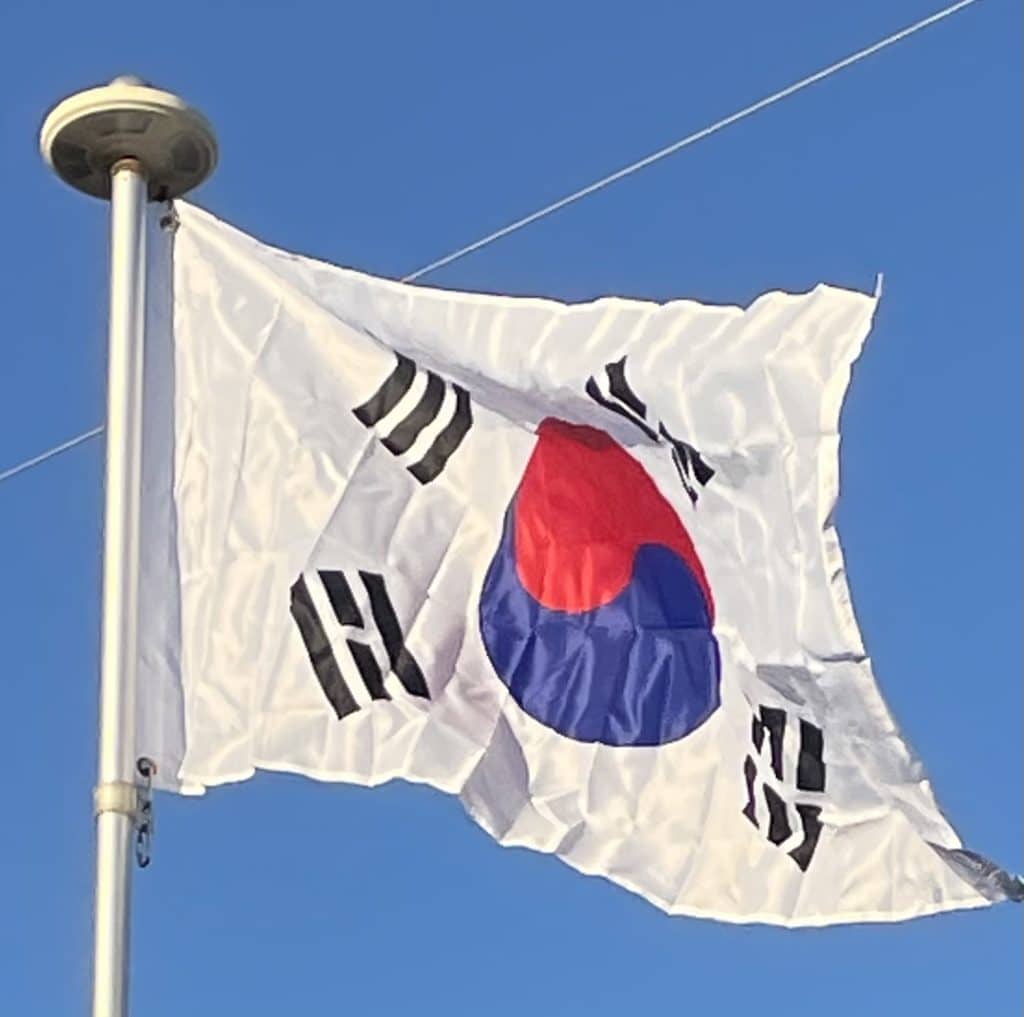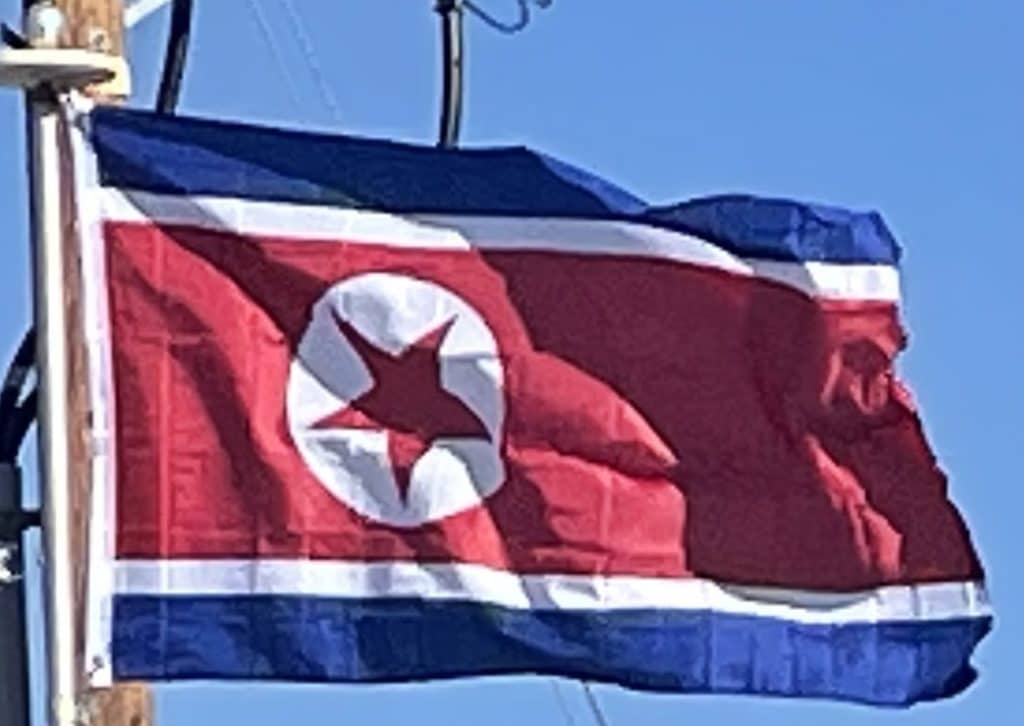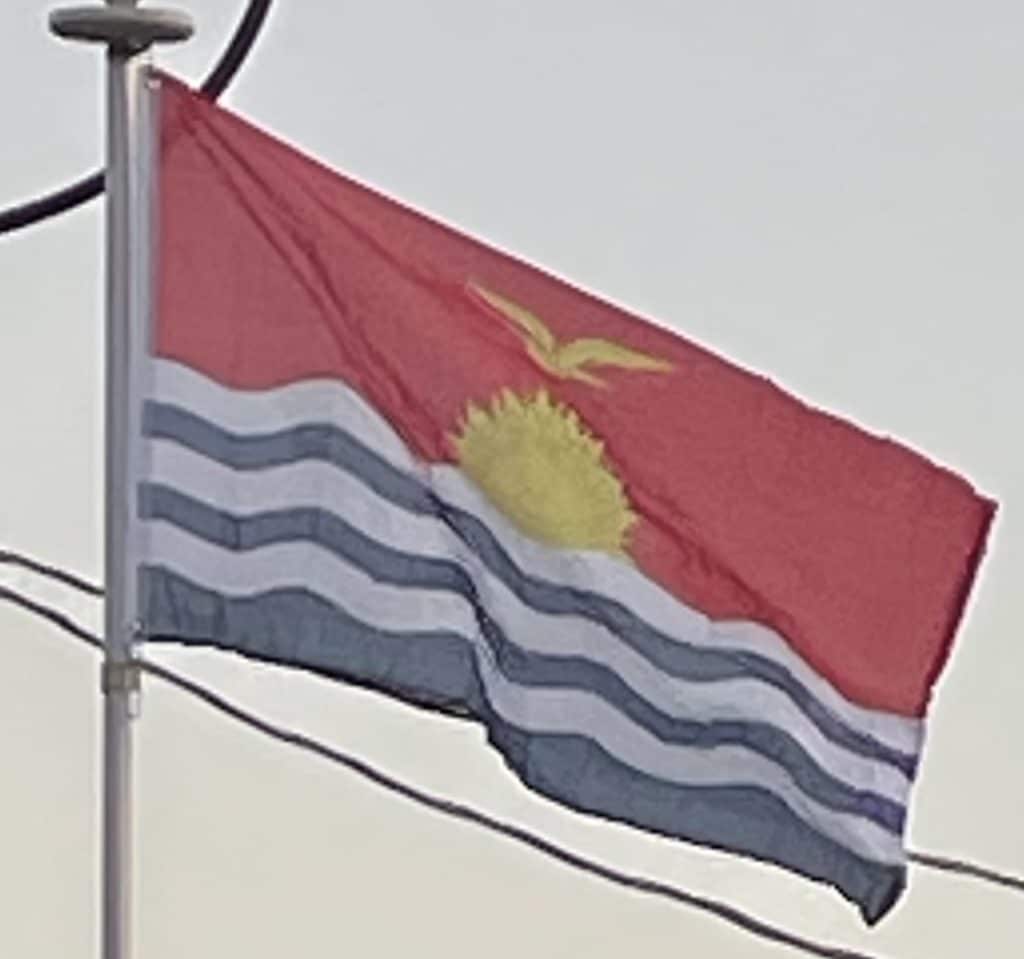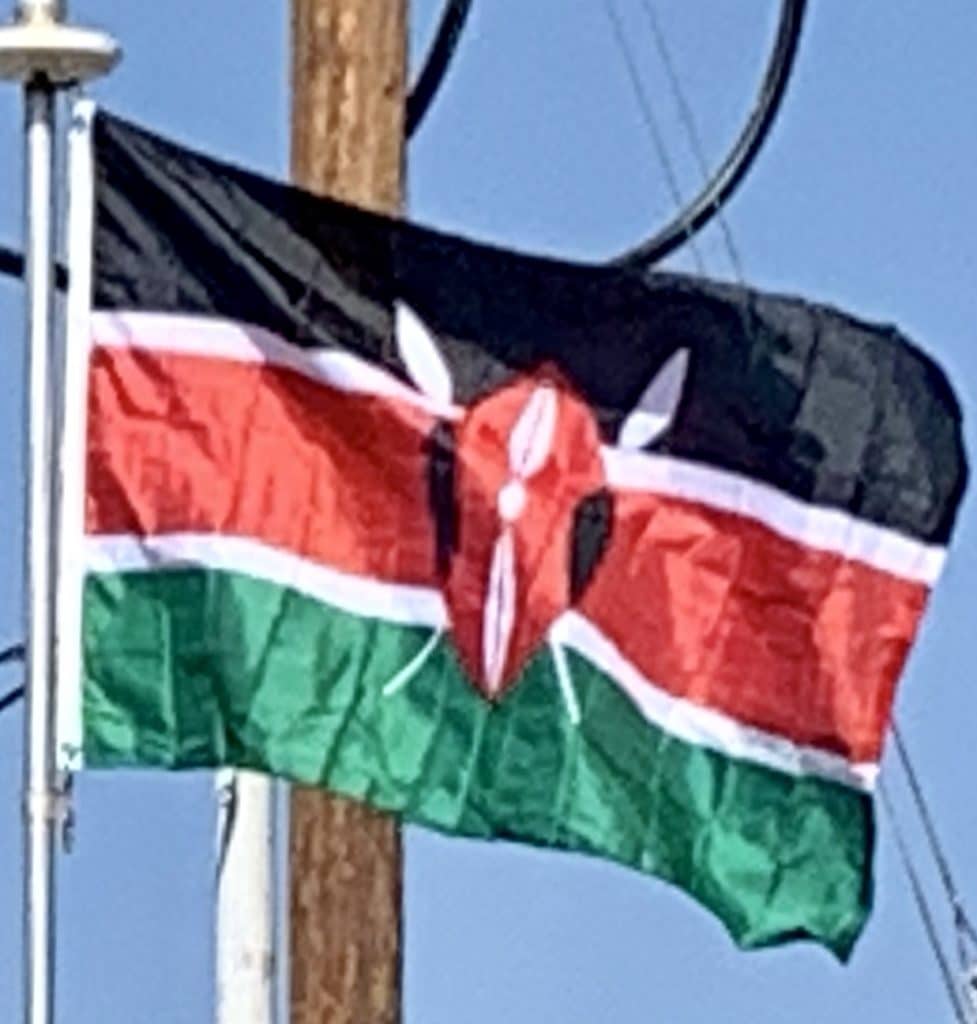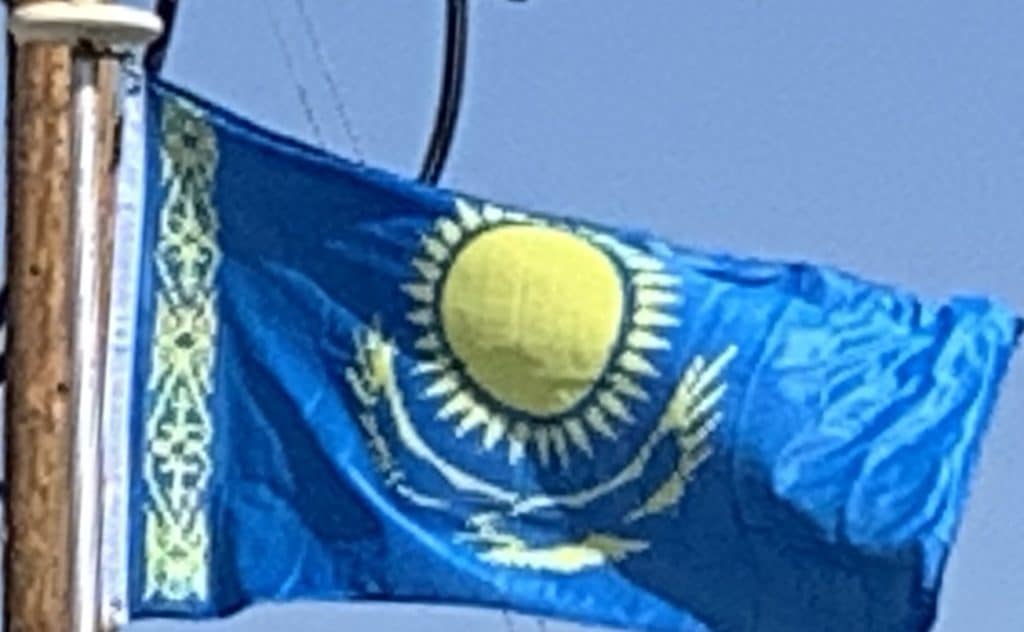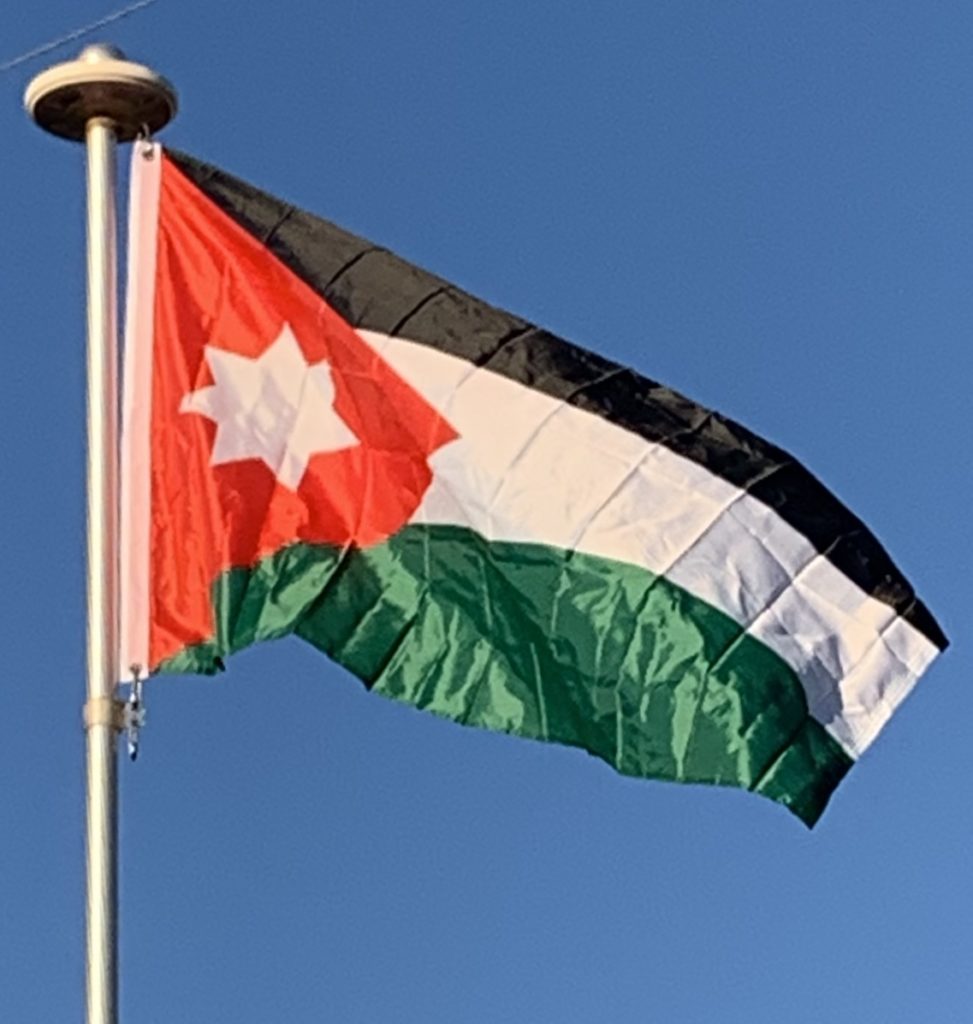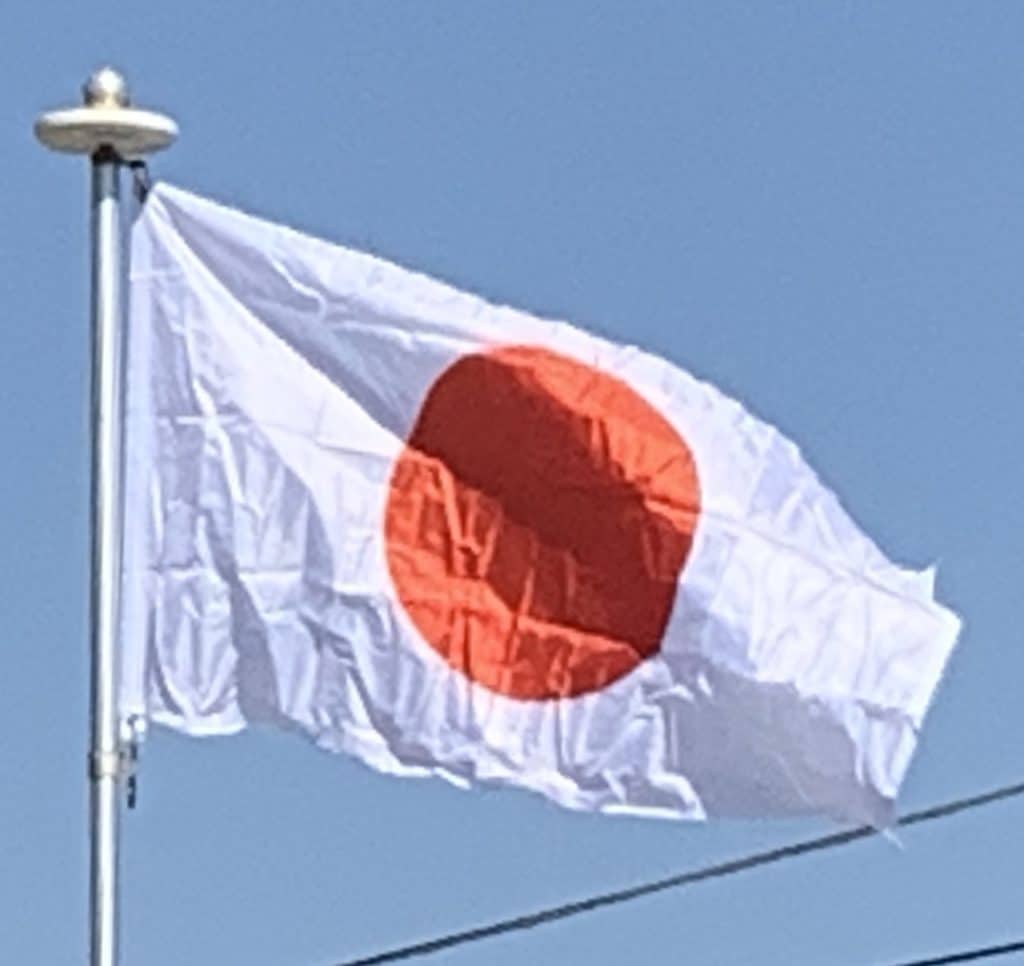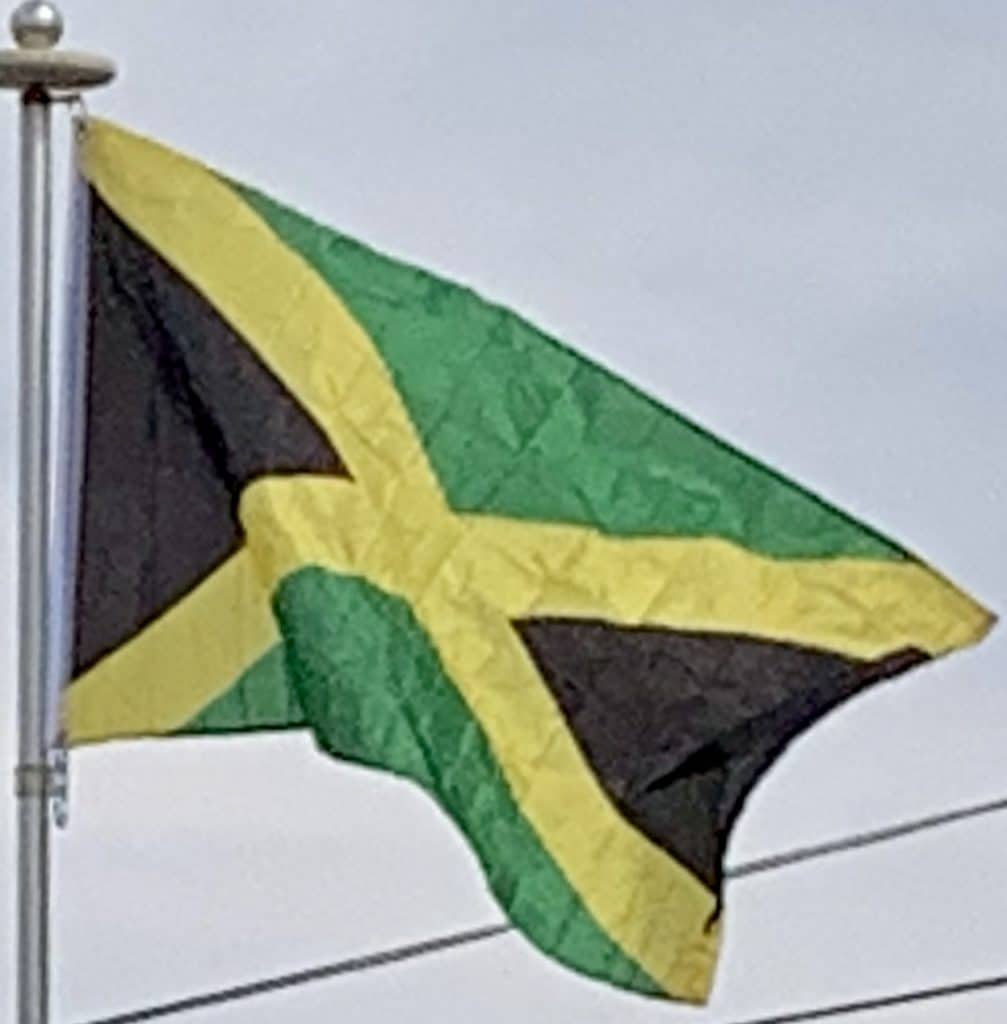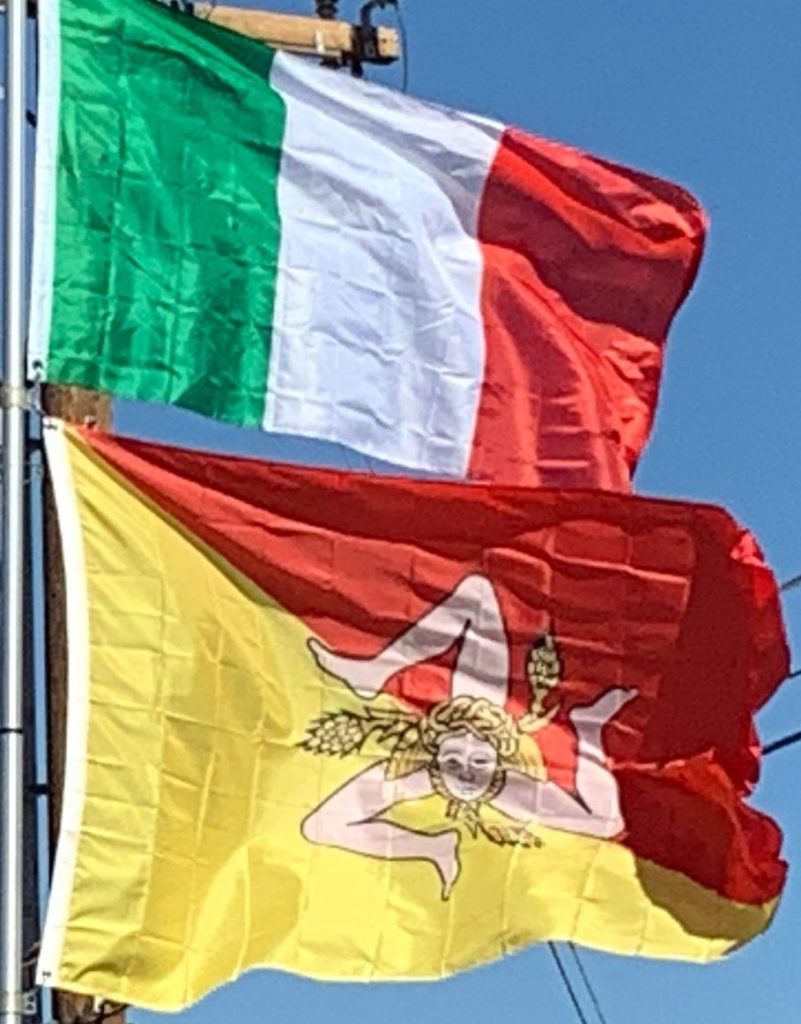The flag of Jordan, officially adopted on 16 April 1928, is based on the 1917 flag of the Arab Revolt against the Ottoman Empire during World War I. The flag consists of horizontal black, white, and green bands that are connected by a red chevron. The colors stand are the Pan-Arab Colors, representing the Abbasid (black band), Umayyad (white band), and Fatimid (green band) caliphates. The red chevron is for the Hashemite dynasty, and the Arab Revolt.
In addition to the bands and chevron, a white star with seven points is featured on the hoist side of the red chevron. The star stands for the unity of the Arab people. Its seven-pointed star refers to the seven verses of Al-Fatiha. The seven points represent faith in one God, humanity, humility, national spirit, virtue, social justice, and aspiration.

